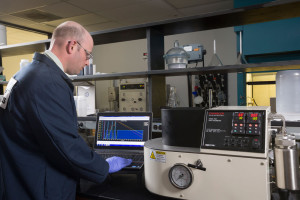Baker Hughes drilling fluid system optimizes circulating pressures

Baker Hughes’ recently commercialized the MPRESS drilling fluid system, which enables operators to manage circulating pressure more efficiently by reducing stand pipe pressure and applying more horsepower to the bottomhole assembly and drill bit.
The shear-thinning rheological profile of the MPRESS system has a “rapid-set/easy-break” gel structure that minimizes the cuttings in the vertical section of the wellbore from settling into the curve during connections and trips. It also has elevated ultra-low-shear-rate viscosity (ULSRV) that minimizes the likelihood of the cuttings in the lateral section from agglomerating on the bottom of the wellbore “gluing down” during connections. Both the rapid-set gels and elevated ULSRV help keep the wellbore clean and minimize torque and drag associated with cuttings beds in the lateral section. In addition, the gels within the MPRESS system have the ability to break easily, reducing surge pressure when tripping in the hole so mud losses are reduced.
The MPRESS system reduces viscosity in the drillstring, while optimizing viscosity in the annulus for more efficient cuttings transport. The pressure saved in the drillstring can be used to increase flow rate, provide more power to motors and bits, and save wear and tear on surface equipment. In combination with other Baker Hughes technologies, such as the Autotrak Curve rotary steerable system and Talon high-efficiency PDC bits, the pressure profile of the MPRESS system enables efficient drilling of challenging lateral sections in unconventional reservoirs.
MPRESS, Autotrak and Talon are a trademarks of Baker Hughes.




